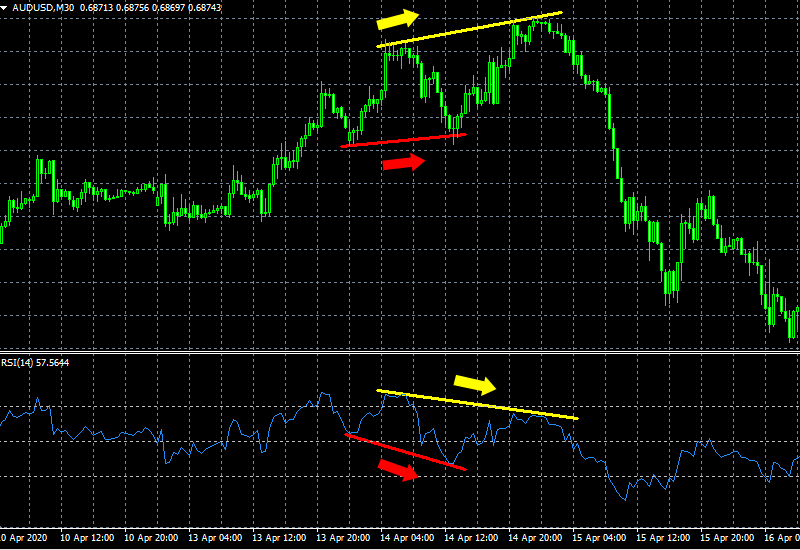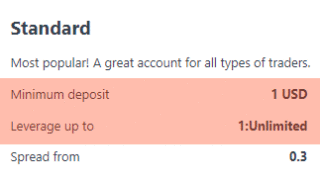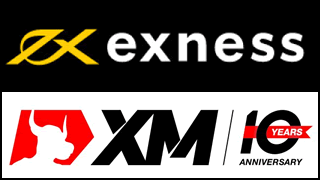Introduction
I’d like to write five articles about “Divergence” from now on.
“Divergence” in forex trading means a phenomenon in which the movement of prices and the movement of oscillator-based indicators go in reverse. Divergence originally means that if two lines or paths diverge, they separate and go in different directions (Longman English-English dictionary).
A basic forex textbook mentions that a divergence implies a reversal of the current trend. On the other hand, we sometimes hear the term of “Hidden divergence”.
Difference between “Regular Divergence” and “Hidden Divergence”
There are two types of divergence, “Regular (or Classic) divergence” and “Hidden divergence”. In the chart below;
The yellow line means “Regular divergence”
The red line means “Hidden divergence”

The “Regular divergence” (yellow line) is a line connecting two tops (“Higher High” and “Lower High”) during an uptrend, suggesting a reversal of the trend. This is familiar. On the other hand, the “Hidden divergence” (red line) is a line connecting two bottoms (“Higher Low” and “Lower Low”) during an uptrend, suggesting that the trend will continue. (On the contrary, when it is a downtrend, Regular divergence connects two bottoms and Hidden divergence connects two tops.)
In the chart above, the appearance of “Hidden divergence” has become a perfect “buy on dip” and a signal to continue the upward trend thereafter, and after that, “Regular divergence” appears and the trend finally reverses.
These divergences are not always signals that guarantee 100% continuity or reversal of trends. It is dangerous to trade only this for material. However, divergence is a very helpful factor when considering the superiority of trading, so there is no reason not to use it in trading.
The most important difference from viewpoint of trade strategy
“Hidden divergence” implies pullback (dip or rally) in the middle of the trend, and “Regular divergence” implies reversal at the end of the trend, but the most important difference from viewpoint of trade strategy is;
- Regular divergence is used for “counter trend” to entry opposite direction of trend, because it aims to reverse the trend.
- On the other hand, Hidden divergence is used for “trend follow” to entry same direction of trend, because it aims to buy on dip or sell on rally in the trend continuation.
Therefore, it is important that to always judge which is better between trend follow or counter trend based on market condition. You should not always entry on both Regular divergence and Hidden divergence.
History of inventing divergence
Although divergence can be used for oscillator-based indicators other than RSI, the history of divergence begins with the “RSI”, which is a representative of oscillators.
The RSI was invented by J.W. Wilder in 1978, and Wilder advocated “divergence” in which price movements and RSI movements deviate from each other.
After that, Andrew Cardwell, who researched RSI, added a new interpretation of RSI, and in addition to Regular divergence, there is “Reversal (Hidden divergence)”, and he proposed that there are two types of reversal: “Positive reversal” and “Negative reversal”.
Positive reversal: Occurs on uptrend
Negative reversal: Occurs on a downtrend
Divergence? or Divergency?
Some people call divergence “Divergency”. Both are nouns with the same meaning. The adjective of both Divergence and Divergency is “Divergent”.





















